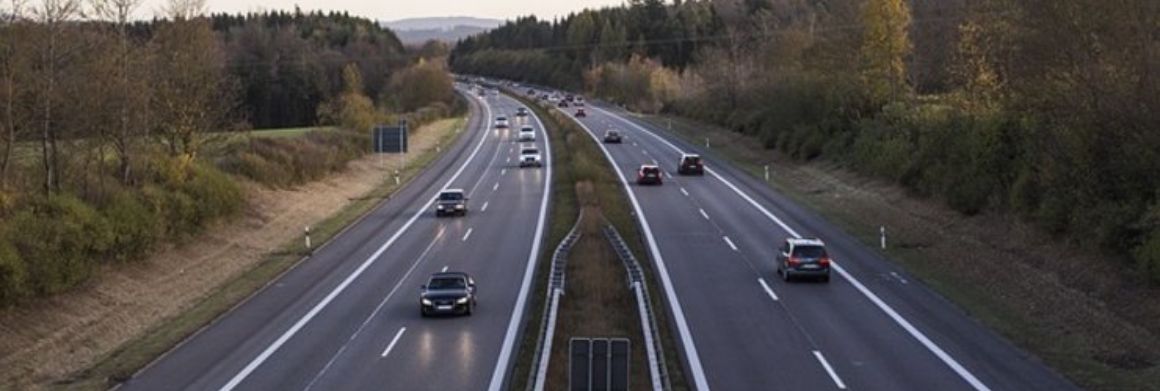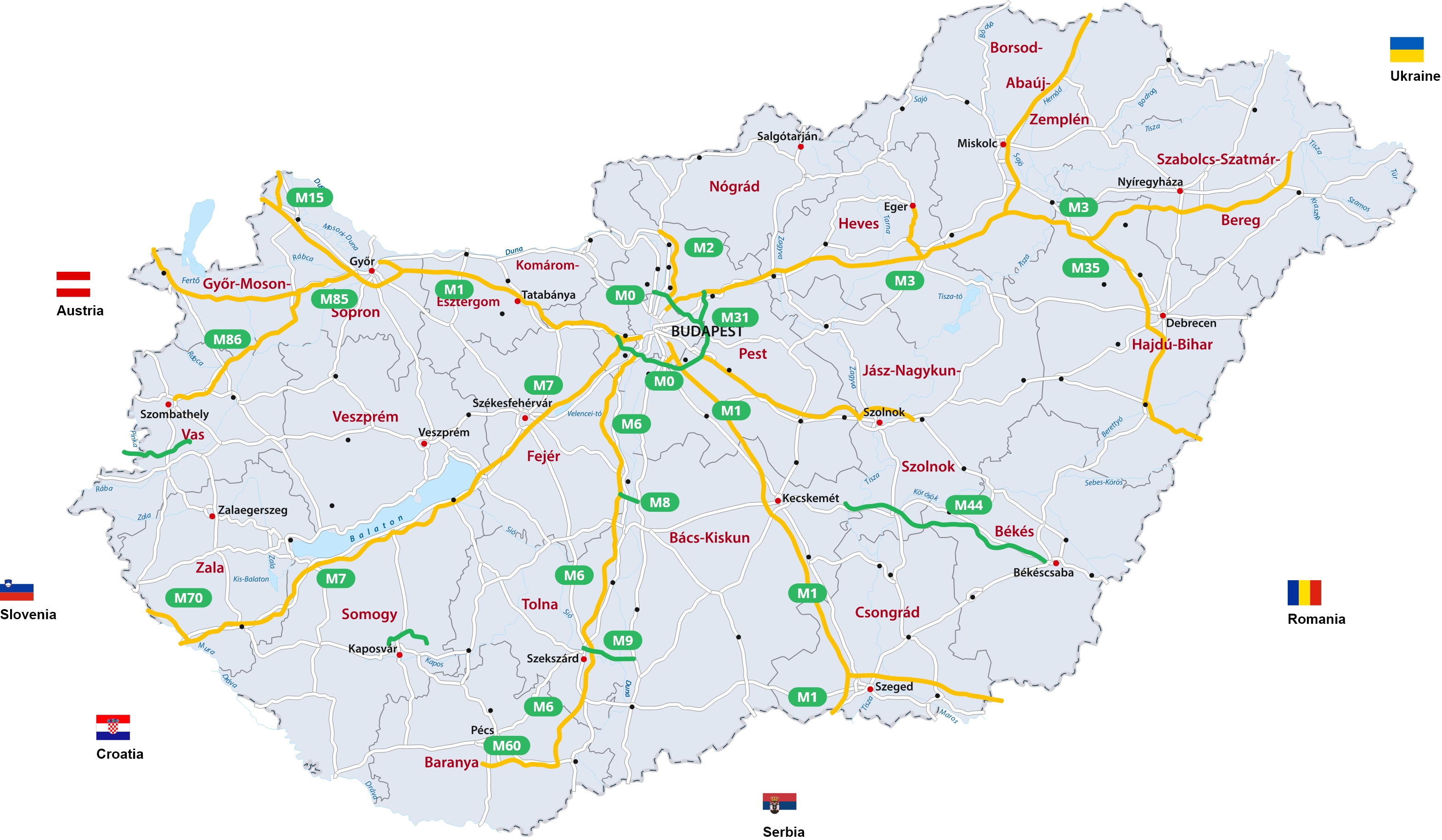The roads in Hungary - Limits and Tolls
The road system in Hungary differs in many ways from elsewhere in Europe. You should familiarise yourself with the Hungary road types, speed limits, and toll regulations when planning your trip to Hungary. Otherwise, you may quickly find yourself on a Hungarian toll road that you are only allowed to drive on for a fee.
In this article, we will explain all the essential regulations and why you should buy a Hungarian e-vignette online in advance so that you can use the motorway worry-free.

Motorways and expressways within Hungary’s road system
Hungary has a wide network of motorways and expressways that allow you to drive swiftly through the country. This is also, by far, the best way to get to your desired destination quickly. However, many of these roads are subject to tolls. You can only drive on them if you have previously purchased an e-vignette for Hungary. The cost depends on the vehicle category and the planned duration of the trip.
Hungary Motorways
Hungary uses the international traffic sign for motorways (white motorway on a blue background) and each road name begins with an "M" followed by the relevant number. Hungary’s Motorways are characterised by structurally separated directions of travel and offer at least two lanes per direction. As they are subject to tolls, you should find out in advance about all toll routes in Hungary and buy an e-vignette online.
There is a minimum speed of 80 km/h on the motorway in Hungary and a maximum speed of 130 km/h for cars and motorcycles. If you are driving with a trailer, then the speed limit is 100 km/h. Buses and trucks are also only allowed to travel at 100 km/h and 80 km/h, respectively, to ensure safety on the motorway.
Expressways
Hungary’s road system is usefully complemented by a dense network of expressways connecting to the motorways. These are also marked according to international standards (white car on a blue background), so they are easy to recognise. Expressways can be somewhat more sparsely developed than motorways, so reduced speed limits apply to all vehicles.
For cars and motorcycles, the speed limit is 110 km/h. Buses and trucks must, however, reduce their speed to 70 km/h. Additionally, there are exceptions, and depending on the section, other upper limits may apply. Therefore, you should always pay attention to the signs. Expressways also start with an "M" in front of their numbering, the best known of which is probably the M0, which is a ring around the country’s capital city, Budapest, connecting other motorways.

Main roads complement Hungary’s road system
There are countless main roads in Hungary, which are divided into two categories. Depending on the connectivity and purpose of the road, these can be first- or second-order main roads. Speed limits between 50 and 90 km/h apply, depending on the location.
First-order main roads
First-order main roads serve both international and domestic traffic, which is why they are usually connected to the motorway or expressway network. They are marked by a green sign with a white number. The number is usually a single digit, which makes it easy to distinguish from a second-order main road.
Second-order main roads
Second-order main roads are also marked by a white number on a green sign, but it is usually two digits.

All Hungarian Toll Roads In 2026
Regional toll roads
National toll roads

Rural roads and European roads complete the road system in Hungary
Rural roads complete the local road network and serve as a connection to the main Hungarian roads. Therefore, the first two digits of the four-digit numbering indicate which main road the rural road branches off. A speed limit of between 50 and 90 km/h applies on rural roads.
European roads, on the other hand, are a special case because they are not a separate road category. They serve mainly as an additional orientation aid with which long-distance roads (motorways, expressways, and main roads) are often marked. These can be recognised by an "E" in front of their number.